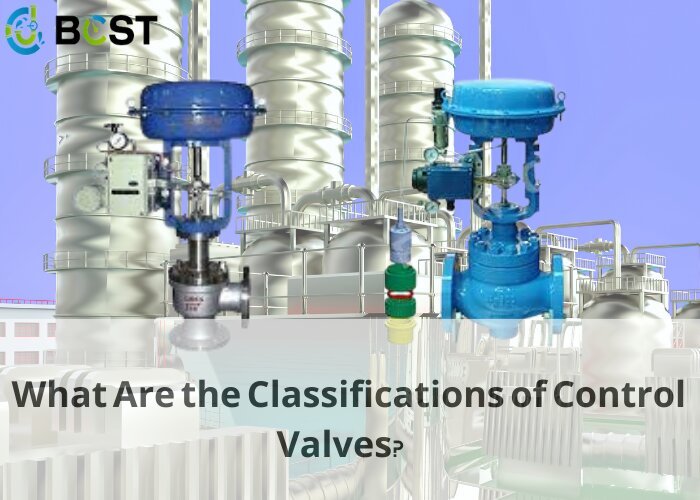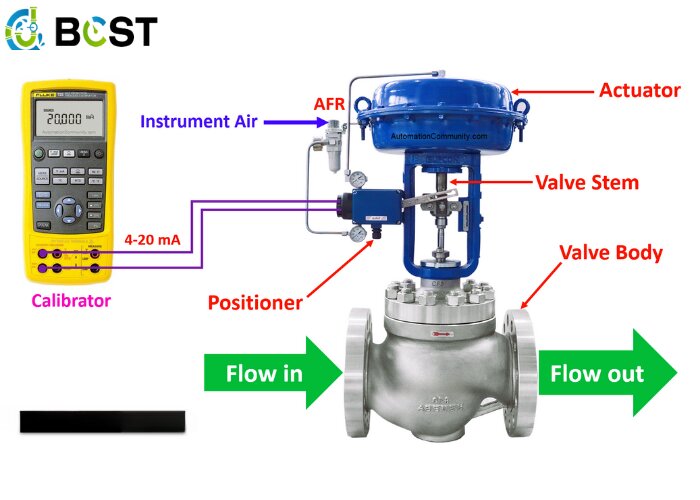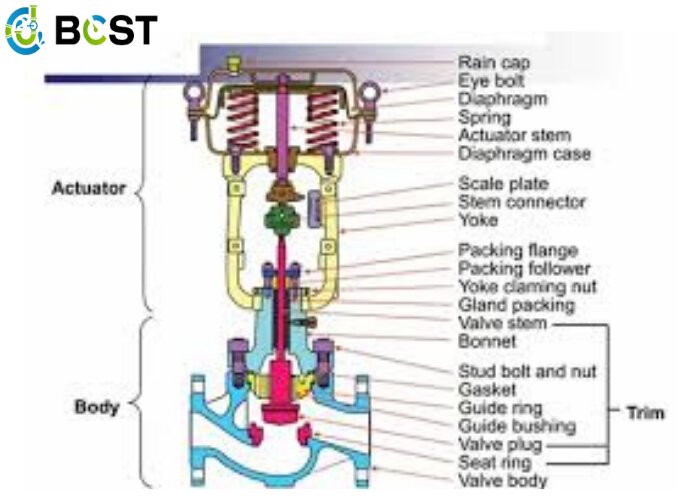
In process control and automation, control valves play a pivotal role in regulating the flow, pressure, temperature, and other vital parameters of fluids within industrial systems. These mechanical marvels are the unsung heroes behind the scenes, ensuring that manufacturing processes, power generation, and various industries operate smoothly and efficiently. However, control valves aren’t one-size-fits-all solutions; they have various types, each tailored to specific applications. In this blog, we’ll delve into the classifications of control valves, shedding light on the diverse categories that engineers and operators rely on to optimize processes, maintain safety, and achieve precision control in many industries. Whether you’re an engineer looking to expand your knowledge or simply curious about how these essential devices work, this exploration into control valve classifications will pique your interest.
We classify control valves into two types based on their applications: general service and special service.
General Service:
- General Service valves are appropriate for the majority of common applications.
- They often have a lower pressure-rated category.
- Its pressure ratings range from ANSI class 150 to 600.
- Corrosive fluids and high-temperature usage are not suitable for General usage valves.
- Fewer chances of cavitation or flashing.
- General service valves can be exchanged to some extent.
- Flexibility, built into the design, best suits them for a broader range of applications.
- The body of a General Service valve is made of stainless or carbon steel.
Special Service:
Special service valves are designed for high-stress applications. Special features of the valve allow it to handle unsteady applications. High-pressure drops can be handled by the special service valve. The high-pressure drop, as we know, creates severe cavitation, flashing, choking, and excessive noise. Trims in globe-type and ball-type rotary valves have been created by special service valves to prevent the high-pressure drop problem.
Based on function:
On/off Control Valve:
On-off or block valves allow or prevent fluid flow. The valve is either entirely closed or completely open. Ball, gate, plug, pressure relief, and tank bottom valves are examples of on/off valves.
On-off valves are typically used in applications where diversion of flow around an area is required. This need arises when,
- Maintenance is being performed.
- Workers must be safeguarded from potential safety concerns.
- Used in mixing applications where fluids are combined for a predetermined time without measurement.
- Safety management systems also require automated on-off valves to shut off the system in emergencies promptly.
Pressure relief valves are self-actuated open-close (on-off) valves. Pressure relief valves only open when the pressure surpasses a predetermined level.
These valves therefore prevent over-pressurization of the liquid service. Safety valves (on-off) are best suited for gas applications.
Safety valve exhaust port opens when the system is over pressurized.Failing a safety valve leads to a safety or process hazard, which may cause untoward incidents in the plant.
Throttling:
Throttling valves allow the flow regulation between fully open and fully closed. The plug valve and throttling valve are both appropriate for on-off and throttling. Globe valves are appropriate for on-off and throttling service.
Based on the motion:
Linear motion:
The most popular valves are linear motion valves or linear control valves. A sliding-stem valve is used in this type of valve. The sliding-stem design makes it move the closure element into an open or closed position.
Examples of the basic linear valves are the globe, pint, and diaphragm.
Linear valves have the following features.
- Simple design
- Easy maintenance
- Versatility with more size
- Range of pressure class
- Design options other than other motion classifications.
Rotary motion:
Rotary motion valves use a rotary shutoff element that moves in a quarter-turn or 45-degree range, allowing flow when open and preventing flow when closed.
- Rotary valves are typically more compact.
- Weigh less than comparable linear valves
Rotary motion valves start with butterfly and ball valves. Butterfly valves are ideal for low and moderate-pressure applications. Ball valves require the least amount of maintenance and have the highest flow capacity of any control valve.
Rotary valves are limited in application due to pressure drop difficulties. Rotary valves are susceptible to cavitation and flashing issues. Rotary valves, on the other hand, have advanced designs. Rotary valves, on the other hand, can circumvent these fundamental constraints. The use of rotary valves is becoming more common.
Based on port size:
Reduced port valves:
A small port valve shut-off element restricts flow. The flow area (seat) of that port of the shutoff element is significantly less than the full port. On gate valves, it is approximately one pipe diameter and 60% of the complete bore on ball valves.
The primary purpose of reduced-port valves is to regulate the flow by reducing it or through throttling.
Full Port valves:
High flow capacity is best served by full port or bore valves. Internal flow passages in the valve body of ball and gate valves are relatively large. As a result, it enables smooth flow with minimal constriction.
Because the internal flow is symmetrical to the entire area of the entrance port, such valves are known as full-port valves.
Full-port valves are commonly employed in on-off and blocking services where the flow needs to be halted or diverted.
Based on the action in failure states:
Air-to-close:
When the air pressure input signal above the diaphragm increases, the plug on the stem of the air-to-close valve closes the aperture to stop fluid flow.
If there is no air pressure input signal or the air pressure drops, the plug will open the orifice. These valves are also called fail-open valves.
Air-to-open:
When the air pressure input signal below the diaphragm increases, the plug on the stem of the air-to-open valve opens the orifice, allowing fluid flow. When the air pressure input signal is absent or the air pressure drops, the stem plug stops the fluid flow.

Conclusion
Knowing the control valves is important for industries and control progress. These valves are vital for precise fluid regulation and the efficient operation of various industries. Knowing the classification is vital for choosing the suitable types of the valves. Control valves is the essential tools for increasing security and improving efficiently. They have complex design and engineering,A solid understanding of control valve is the foundation for effective and reliable process control.







